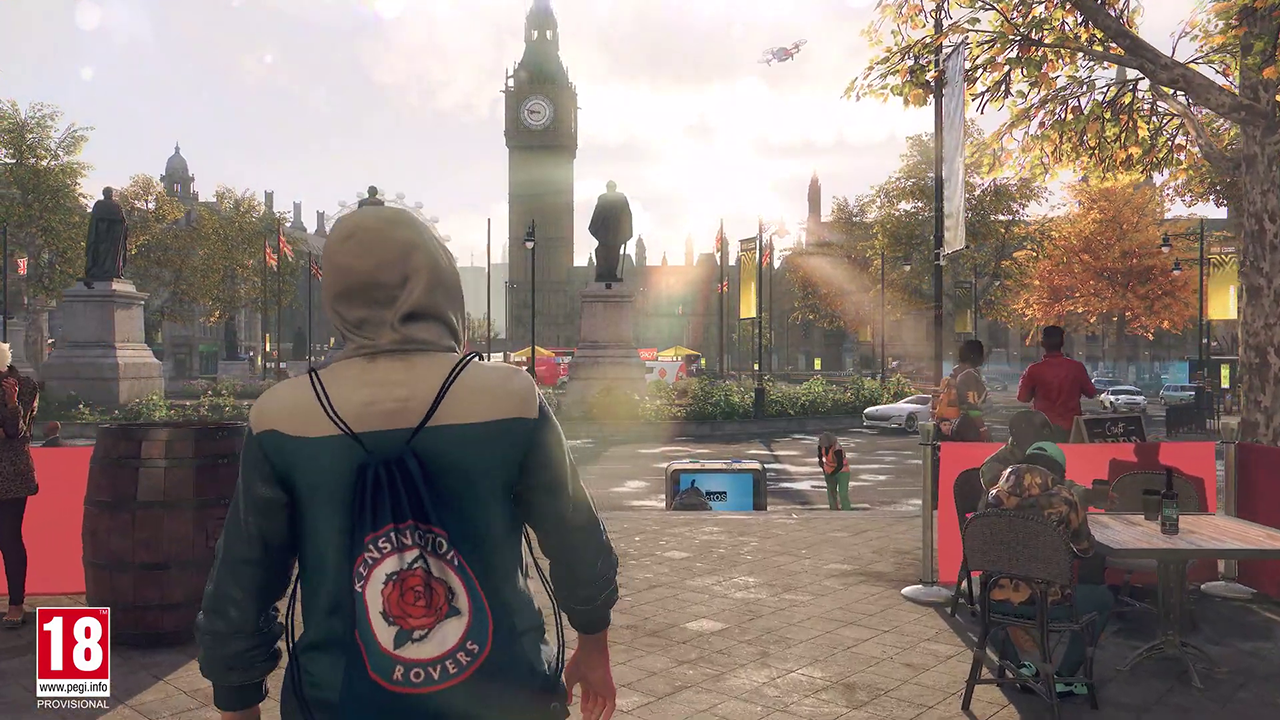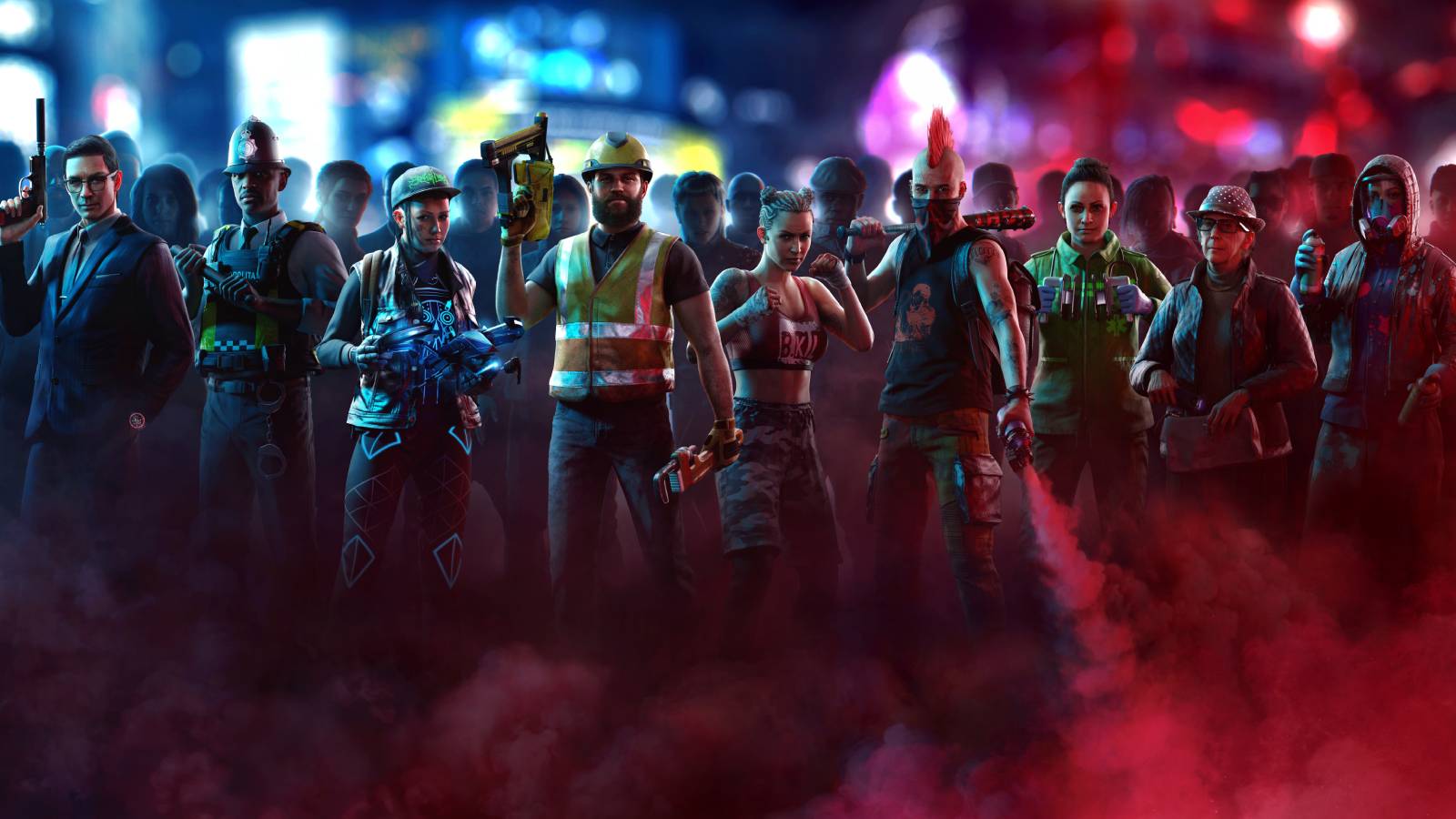Can the Nvidia RTX 3090 run Watch Dogs: Legion at 8K?

PC built by Chillblast
Motherboard: Asus ROG STRIX Z390-E GAMING
CPU Cooler: Noctua NH-U14S
Case fans: Noctua NF-A14 PWM Chromax 140mm
Processor: Intel Core i9-9900K, 8 Cores / 16 Threads
GPU: Nvidia GeForce RTX 3090
Storage: 500GB Samsung 970 EVO Plus M.2 PCIe
Secondary Storage: 2TB Samsung 860 QVO
Power: Corsair RM850x 80 PLUS Gold 850W PSU
Case: Fractal Design Vector RS Tempered Glass
RAM: G.Skill Trident Z RGB 32GB DDR4 3200MHz
Monitor: Dell UltraSharp UP3218K
Watch Dogs: Legion is now out, allowing players to recruit pretty much any NPC in the game to help liberate a near-future London from its oppressors. As our review points out, it's a bit too much of a formulaic Ubisoft open world game, but there is fun to be had, and on PC there's plenty of graphical settings, including ray tracing, and support for ultra-high definition resolutions.
With the Nvidia RTX 3090, we've also now got a GPU that puts in a decent performance when it comes to 8K. In our Nvidia RTX 3090 vs RTX Titan smackdown, we found the RTX 3090 did a decent job of running games like Doom Eternal and Death Stranding at monstrous 7,680 x 4,320 resolutions.
With Watch Dogs: Legion being an open world game that tries to replicate a large portion of London with realistic graphics (check out our video below for how accurate it is), the RTX 3090 is really going to have its work cut out, especially as Ubisoft isn't best known for its PC ports, unfortunately.
So, without further ado, let's see just how well the RTX 3090 runs Watch Dogs: Legion at 8K.
Watch Dogs: Legion 8K performance
As we're optimists here at TechRadar, we went right ahead and put Watch Dogs: Legion to 'Ultra' settings at 8K and ran the benchmark. The results... were not good.
The RTX 3090 managed an average of 22 frames per second (FPS), with it dipping to just 16FPS during a hectic firefight.
The benchmark, it should be noted, runs through a busy Camden Market scene at night, with puddles, neon lights and rain. It's certainly intensive, as these results show.
Sign up for breaking news, reviews, opinion, top tech deals, and more.
Also, even though these settings were 'Ultra', that didn't mean every graphical effect was whacked up to full. Ray traced reflections, for example, were turned off.
We put ray traced reflections to its lowest setting, 'medium', and ran the test again. The visual improvement is immediately noticeable, with ray tracing allowing puddles to look far more realistic, accurately reflecting the world around them. The same can be said for the metal bins and chrome surfaces in the scene, which all had realistic reflections. It was especially impressive with the dented metal surfaces.
The effect instantly gave the game world a more realistic feel - but it absolutely tanked the FPS, with the game now averaging 12FPS. Unplayable, basically.
However, as we've seen with games like Death Stranding at 8K, Nvidia's DLSS tech (Deep Learning Super Sampling), utilizes the power of the GPU to intelligently upscale games to a higher resolution using AI and machine learning. The idea is that it can improve performance without too much perceptible visual difference compared to native resolutions.
We turned DLSS on to 'Performance', and instantly the performance was better, hitting an average of 30FPS, allowing us to have ray tracing on with a semi-respectable frame rate. However, while 30FPS may be fine for people playing on the aging Xbox One and PS4, anyone who paid $1,499 (£1,399, around AU$2,030) for the RTX 3090 is not going to be happy.

Putting DLSS up to 'Ultra Performance' again helped, giving us an average FPS of 41FPS, and by turning off ray tracing, we got up to 51FPS.
That's close to the magical 60FPS at 8K performance we're looking for, but it doesn't quite hit it, and it means sacrificing ray traced reflections, which is a shame as it is genuinely impressive.
But what if we knock the overall graphics down to 'Very High'? Well, with DLSS on 'Ultra Performance' and ray traced reflections on 'Medium', the RTX 3090 managed 46FPS at 8K.
Not quite there, then. However, by turning of ray tracing, we hit 60FPS at 8K. This is a remarkable achievement considering the ultra high resolutions, and the game still looks pretty great at that setting.
However, the loss of ray traced reflections really is a disappointment. Without them, Watch Dogs: Legion's world just looks so much flatter.

Can you get 8K and ray tracing?
So, is there a way of playing at 8K with ray traced reflections on and acceptable frame rates?
First, we lowered the settings to 'High' while keeping DLSS on 'Ultra Performance' and ray traced reflections to 'Medium'. Sadly, the average FPS once again dropped away from 60FPS to just 49FPS, showing just how intensive ray tracing is.
Going down to 'Medium' graphical settings saw the RTX 3090 hit 54FPS, and putting it down to low got us 57FPS.
That's as close as you'll get to 60FPS at 8K with ray tracing on. You get that realistic lighting effect, but it comes at a big cost, with the overall graphical quality of the game suffering.
That means that you can play Watch Dogs: Legion at 8K with ray tracing on, but would you want to? Probably not. However, by turning ray tracing off, you can get a very good 8K gaming experience.
However, we really were impressed with the ray traced effects, so much so that we'd rather drop down to 4K and play it with a mix of very high and high settings, just to have ray tracing.
In the end, it shows that the RTX 3090 is definitely a powerful GPU where 8K gaming is possible, but at the moment ray tracing is just too intensive.
This is also another great highlight for DLSS - it's really impressive how this tech makes such a difference to frame rates, and it means 8K gaming really is a possibility.
- These are the best GPUs of 2020

Matt is TechRadar's Managing Editor for Core Tech, looking after computing and mobile technology. Having written for a number of publications such as PC Plus, PC Format, T3 and Linux Format, there's no aspect of technology that Matt isn't passionate about, especially computing and PC gaming. He’s personally reviewed and used most of the laptops in our best laptops guide - and since joining TechRadar in 2014, he's reviewed over 250 laptops and computing accessories personally.